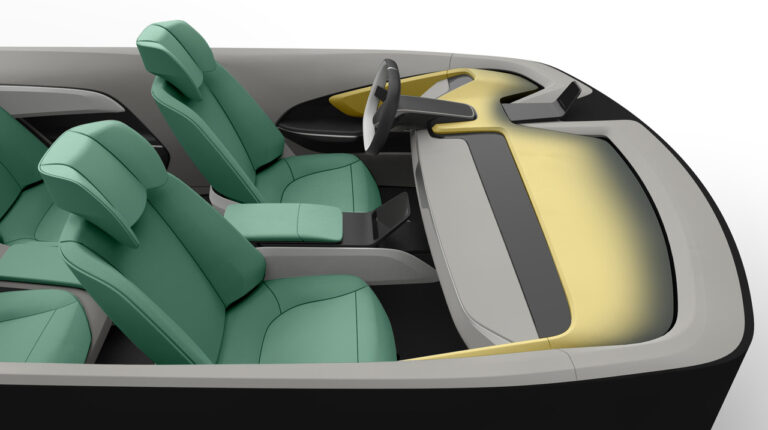Bridge of Weir (BoW), a supplier of fine automotive leather to luxury car brands, has revealed the Conscious Collection range of car interior concepts, aimed at creating a calmer, more comfortable in-car experience, with a focus on those who are neurodivergent. To create the collection, BoW engaged with neurodivergent individuals and listened to their experiences to inform material choices and design approaches.
Neurodiversity refers to the different ways the brain can work and interpret information. Examples of neurodivergent conditions include Autism Spectrum Disorder (ASD) and Attention-Deficit/Hyperactivity Disorder (ADHD). It is estimated that around one in seven people is neurodivergent.
The BoW Conscious Collection builds on the work of fellow Scottish Leather Group company Muirhead, which released its Sensation Collection designed to enhance the comfort of neurodivergent aviation passengers. As part of Muirhead’s research, the team consulted Visible Inclusive Accessibility (VIA), an organization that supports businesses in creating more inclusive and accessible environments. The collaboration and insights of the Muirhead project helped BoW understand how sensory sensitivities affect the way people experience travel.
Traditionally, inclusive design has focused on physical accessibility, with sensory considerations often overlooked. Debra Choong, design manager at BoW, said, “Bridge of Weir’s goal is to interpret evolving design directions across color, texture and application, ensuring that our company, as well as our products, stays at the forefront of material innovation. With the Conscious Collection, our aim is to minimize potential stressors and ensure our natural materials contribute to a calming environment. Ultimately, we want to create interiors that foster inclusivity while celebrating the unique strengths of neurodiverse individuals, enhancing the travel experience for all.”
Calm colors and natural materials
One of the key takeaways from the aviation project was the importance of simplicity. Excessively high-contrast colors, busy patterns or excessive stitching could contribute to sensory overstimulation, making the environment less comfortable.
Clear edge boundaries are essential in aviation seat design, and although car interiors are more personalized spaces, this is something that BoW considered to aid focus and reduce sensory overwhelm for passengers who rely on spatial cues.
Features such as higher-profile piping, subtle trim details and tonal variations used in aviation have been considered in the collection to help define space; headrests and chair backs were also noted as providing visual rest areas. As well as this, thoughtful use of color, texture and pattern to guide the eye and create a structure without adding unnecessary visual or tactile ‘noise’ was noted by BoW.
The conceptual Conscious Collection also prioritizes soft, muted tones to provide sensory comfort without overwhelming the senses, to create a tranquil and rejuvenating traveling experience. Monotone or tonal color schemes to reduce visual stress, as opposed to excessive contrasts that can contribute to overstimulation, have also been used. Cool tones, such as blues and greens, which are widely recognized for their calming properties, have been brought to the forefront of the collection. Research has found that greens, in particular, are associated with nature and stability and are especially beneficial for autistic individuals.
Scents
The role of scent is highly personal, but for many, the aroma of a natural material such as leather evokes a sense of nostalgia, comfort and security. Playing with the subconscious link to familiar, reassuring memories, BoW has also taken the carefully curated natural material, leather, into consideration to round off the multisensory experience.
In related news, AIW recently sat down with Jaeho Oh, head of interior design at Genesis, to discuss the process behind selecting an interior design for new models, and how the development of personalized vehicles will influence the South Korean luxury brand’s future cabins. Click here to read the full story.



